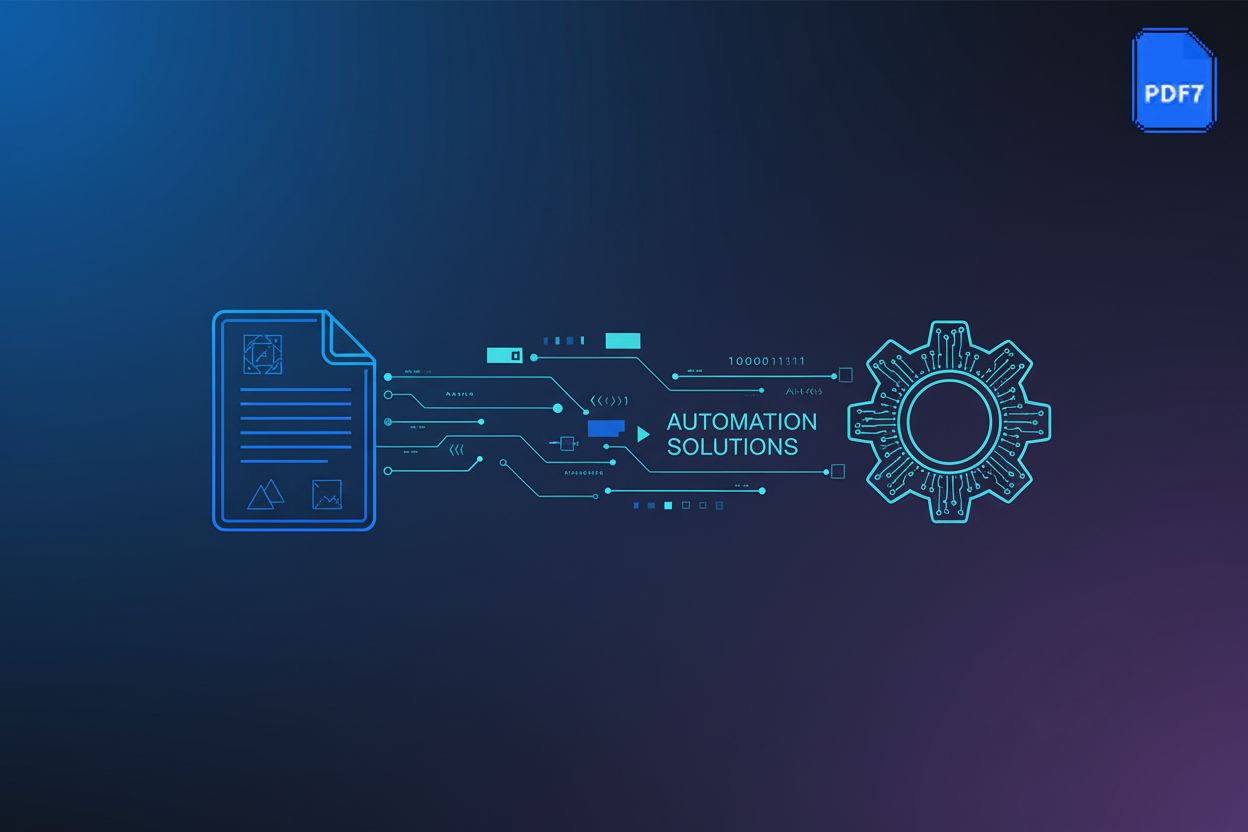New Open-Source AI Tool Unlocks Content and Structure of PDF Files
TL;DR
Bing Webmaster Tools: A Comprehensive Guide to SEO Success
Introduction to Bing Webmaster Tools
Did you know that optimizing for Bing can tap into a significant portion of the search market? While Google often dominates the conversation, ignoring Bing is like leaving money on the table. Bing Webmaster Tools (BWT) provides invaluable insights and resources to boost your site's visibility on Bing and Yahoo.
Think of Bing Webmaster Tools as your direct line to Bing's search engine, offering a behind-the-scenes look at how it crawls, indexes, and ranks your website. It’s a free service packed with features designed to help you improve your SEO and attract more organic traffic.
Here's what you can expect to gain from using Bing Webmaster Tools:
- Comprehensive Site Analysis: BWT provides detailed reports on your website's performance, including crawl errors, keyword rankings, and backlinks. For example, you can identify pages that Bingbot is struggling to access, allowing you to fix them and ensure your content is properly indexed.
- Keyword Research and Optimization: Discover valuable keyword opportunities specific to Bing's search engine. This helps you tailor your content strategy to better align with what users are searching for on Bing.
- SEO Tools and Diagnostics: Access a suite of SEO tools to analyze your site's structure, identify potential issues, and optimize your content for better rankings. You can use the SEO Analyzer to get recommendations on improving your page titles and meta descriptions.
- Index Submission and Management: Submit your sitemap and individual URLs directly to Bing for faster indexing. This ensures that Bing is aware of the latest changes to your website. You can do this by submitting your sitemap through the platform, or for individual URLs, you can use the URL Submission Tool.
- Alerts and Notifications: Stay informed about critical issues affecting your site's performance, such as malware infections or sudden drops in traffic. BWT can notify you of major changes or potential problems.
Depending on your industry and audience, Bing and Yahoo may drive around 20 percent of your site’s organic search traffic.
Using Bing Webmaster Tools is crucial for understanding how Bing views your site and identifying areas for improvement. By actively managing your presence on Bing, you can tap into a valuable source of traffic and grow your online audience.
Now that you understand the importance of Bing Webmaster Tools, let's dive into the first step: configuring your site within the platform.
Configuring Your Site in Bing Webmaster Tools
Did you know that properly configuring your site in Bing Webmaster Tools can significantly impact how Bing crawls and indexes your content? Let's walk through the essential steps to set up your site for success.
First, you'll need to add and verify your website. This process confirms that you are the rightful owner and allows you to access all the valuable data and tools BWT offers. Here’s what you should focus on:
- Adding Your Site: The initial step involves adding your website to Bing Webmaster Tools. You'll need to provide the URL of your site, ensuring it matches the exact domain you want to track.
- Verification Methods: Bing offers several ways to verify your site. You can upload an XML file to your server, add a
<meta>tag to your homepage's HTML, or use DNS record verification. Choose the method that works best for your technical setup.For example, the meta tag verification involves adding a line of code like this to your website's
<head>section:<meta name="msvalidate.01" content="UNIQUE_CODE" />This confirms to Bing that you have control over the site.
- Sitemap Submission: Submitting a sitemap is crucial for helping Bing discover and index your site’s pages efficiently. A sitemap is an XML file that lists all the important URLs on your website. This ensures Bing knows about all the pages you want to be indexed.
- Geographic Targeting: Specify the target audience for your website by setting the geographic targeting. This helps Bing understand which regions are most relevant to your content, improving your visibility in those areas. Bing expects this setting to accurately reflect your primary service area or target market. When set correctly, Bing's search results for users in those specified regions will be more likely to feature your site.
- Crawl Control: Manage how Bingbot crawls your site by setting crawl rules. You can specify which sections of your site should be crawled more or less frequently. This helps optimize crawl efficiency and ensures important content is crawled regularly.
For instance, you might want to set a higher crawl frequency for your product pages that are updated daily with new inventory, while setting a lower frequency for your blog archives that are updated less often. You'll find these settings under the "Crawl Control" section within your site's settings in the BWT dashboard. Typically, you can choose from options like daily, weekly, or even specific time windows for crawling.
Once your site is added and verified, take some time to review and adjust the settings to align with your SEO goals. For instance, regularly updating your sitemap ensures Bing has the most current view of your website's structure.
According to Practical Ecommerce, Bing and Yahoo may drive around 20 percent of your site’s organic search traffic, depending on your industry and audience. Therefore, optimizing your presence on these search engines is essential.
Configuring your site correctly sets the foundation for effective SEO on Bing. By following these steps, you'll provide Bing with the information it needs to understand and rank your website effectively.
Now that your site is configured, let's explore how to analyze its performance using Bing Webmaster Tools.
Analyzing Performance with Bing Webmaster Tools
Want to know how your website is really performing on Bing? Bing Webmaster Tools (BWT) offers a wealth of data to help you understand and improve your site's visibility. Let’s dive into how you can analyze your website's performance using BWT.
BWT provides several key metrics to gauge your site's effectiveness. These insights can guide your SEO strategy and help you identify areas for improvement. Here are some crucial areas to focus on:
- Search Performance: Track your site's impressions, clicks, click-through rate (CTR), and average ranking in Bing search results. Analyzing this data helps you understand how your pages are performing over time and identify potential issues. For example, a sudden drop in impressions might indicate a problem with indexing.
- Keyword Performance: Discover the keywords driving traffic to your site from Bing. This report shows the queries for which your site appears in search results, along with metrics like impressions and clicks. Use this data to refine your keyword strategy and optimize your content for relevant terms.
- Page Traffic: Identify your most popular pages based on Bing search traffic. This helps you understand which content resonates most with your audience on Bing. You can then focus on improving the user experience and optimizing these pages further.
- Index Explorer: The Index Explorer tool allows you to see which pages of your site have been indexed by Bing. It also provides insights into any indexing issues, such as pages that are blocked by robots.txt or have crawl errors.
Imagine you notice a particular page has a high number of impressions but a low CTR. This suggests that while your page is showing up in search results, users aren't clicking on it. You might then investigate the page's title tag and meta description to ensure they are compelling and accurately reflect the content. Tweaking these elements can often lead to a significant improvement in CTR.
Depending on your industry, Bing and Yahoo can drive a significant portion of your organic search traffic.
Regularly monitoring these performance indicators in Bing Webmaster Tools is crucial for making data-driven decisions and optimizing your site for better visibility on Bing. This proactive approach ensures that you're not missing out on valuable traffic and opportunities.
Now that you know how to analyze your site's performance, let's explore how to leverage Bing Webmaster Tools for technical SEO.
Technical SEO with Bing Webmaster Tools
Is your website technically sound? Bing Webmaster Tools (BWT) offers several features to ensure your site is in top shape for optimal crawling and indexing. Let's explore how to leverage these tools for technical SEO.
One of the most crucial aspects of technical SEO is ensuring that search engine crawlers can access and index your content without issues. BWT helps you identify crawl errors, such as 404 errors or server issues, that can hinder your site's performance.
- Crawl Errors Report: This report lists all the errors Bingbot encountered while crawling your site. Addressing these errors promptly improves your site's crawlability and user experience. Prioritize fixing broken links and server errors to ensure seamless access to your content.
- URL Inspection Tool: Allows you to inspect individual URLs and see how Bingbot renders them. This is useful for troubleshooting rendering issues that may affect how Bing understands your content. For example, if your site relies heavily on JavaScript to display content, the URL Inspection Tool can show you if Bingbot is encountering errors that prevent it from seeing that content. It provides details on whether the page was successfully rendered, any errors encountered, and a screenshot of how Bingbot sees the page.
- Robots.txt Tester: Verify that your robots.txt file is correctly configured to allow or disallow access to specific parts of your site. Incorrectly configured robots.txt files can prevent Bingbot from crawling important pages.
A sitemap helps search engines understand the structure of your website and discover new content. BWT allows you to submit and manage your sitemaps effectively.
- Sitemap Submission: Submit your XML sitemap to Bing to ensure all your important pages are indexed. Regularly update your sitemap to reflect any changes to your site's structure or content.
- Sitemap Errors: Monitor your sitemap for any errors, such as incorrect URLs or formatting issues. Addressing these errors ensures that Bing can properly process your sitemap and discover your content.
With the increasing importance of mobile search, ensuring your site is mobile-friendly is crucial. BWT provides insights into your site's mobile performance.
- Mobile Friendliness Test: Use this tool to check if your pages are mobile-friendly. It identifies issues such as small font sizes or touch elements that are too close together, helping you improve the mobile user experience. The test will typically report specific issues like "Text too small to read" or "Clickable elements too close together." Common solutions include increasing font sizes, adding more spacing between tappable elements, and ensuring your site uses a responsive design. The BWT report will often present these as a list of specific errors or warnings, sometimes with visual cues, making it clear where the problems lie. For example, it might highlight a specific paragraph with a warning that the text is too small, directly guiding you to increase the font size for that section.
By actively using these technical SEO features in Bing Webmaster Tools, you can identify and fix issues that may be preventing your site from achieving its full potential in Bing search results. This proactive approach can lead to improved rankings and increased organic traffic.
Now that we've covered technical SEO, let's explore how to leverage Bing's SEO tools to further optimize your website.
Leveraging Bing's SEO Tools
Ready to take your Bing SEO to the next level? Bing Webmaster Tools (BWT) doesn't just offer diagnostics; it provides a suite of SEO tools to actively improve your website's performance. Let's explore how to use these tools to boost your site's visibility.
Keywords are the foundation of SEO, and Bing offers specific tools to help you find the best ones for your audience.
- Keyword Research: Discover keyword opportunities specific to Bing's search engine. This tool provides insights into search volume, related keywords, and trending searches, helping you tailor your content strategy. For example, you can identify long-tail keywords with less competition.
- SEO Analyzer: Analyze your pages for keyword usage and on-page optimization. The tool provides recommendations on improving your page titles, meta descriptions, and content to align with your target keywords.
For instance, if your target keyword is "organic dog food," the SEO Analyzer will check if this keyword appears in your title tag, meta description, and throughout your content. It might flag recommendations like: "Keyword 'organic dog food' not found in title tag," "Meta description is too short and doesn't include the target keyword," or "Keyword density for 'organic dog food' is too high, consider natural integration."
Optimizing your content is crucial for ranking well in search results. BWT offers tools to analyze and improve your on-page SEO.
- SEO Reports: Access comprehensive reports on your site's SEO health. These reports highlight issues such as missing title tags, duplicate meta descriptions, and broken links, allowing you to prioritize optimization efforts.
- Content Analyzer: Evaluate the quality and relevance of your content. This tool checks for factors such as keyword density, readability, and content freshness, helping you create engaging and SEO-friendly content.
Regarding "content freshness," the Content Analyzer tool in BWT assesses this by looking at several indicators. It might report on the recency of your last update for a given page, the frequency of new content being published on your site overall, or even flag pages that haven't been touched in a long time. For example, a report might show a "Low Freshness Score" for an older article, prompting you to review and update it with current information.
Backlinks are a critical ranking factor. BWT provides tools to monitor your backlink profile and identify potential link-building opportunities.
- Backlink Data: Analyze your site's backlink profile, including the number of backlinks, referring domains, and anchor text distribution. This data helps you understand the quality and diversity of your backlink portfolio.
Anchor text distribution is important because it signals to Bing what your page is about. A healthy distribution typically includes a mix of branded anchors (your brand name), naked URLs (your website address), and a variety of relevant keywords, but not an over-reliance on exact-match keywords. Too many exact-match anchors can look unnatural and potentially trigger spam filters.
- Disavow Tool: Disavow low-quality or spammy backlinks that may be harming your site's reputation. This tool allows you to submit a list of domains or URLs that you want Bing to ignore when evaluating your site's backlink profile.
For example, imagine you run a blog about sustainable living. Using Bing's Keyword Research tool, you discover that "eco-friendly home products" has a high search volume on Bing. You then use the SEO Analyzer to optimize your blog posts around this keyword, ensuring it appears naturally in your content, title tags, and meta descriptions.
According to Practical Ecommerce, depending on your industry and audience, Bing and Yahoo may drive around 20 percent of your site’s organic search traffic.
By actively leveraging Bing's SEO tools, you can fine-tune your website for better visibility and attract more organic traffic from Bing.
Now, let's explore some of the new features and updates in Bing Webmaster Tools to stay ahead of the curve.
New feature and updates
Staying up-to-date with the latest features in Bing Webmaster Tools (BWT) is crucial for maintaining a competitive edge in SEO! Microsoft is continuously enhancing BWT with new functionalities and improvements, so let's explore some recent updates that can help you refine your SEO strategy.
- URL Submission API: Automate the process of submitting URLs to Bing for indexing. This api allows you to programmatically submit new or updated content, ensuring Bing is quickly aware of your latest changes. For example, if you publish a new blog post, you can use the api to immediately notify Bing.
- Enhanced Keyword Research: Bing has improved its keyword research capabilities, providing more detailed insights into search volume and keyword trends. This helps you identify valuable keyword opportunities and refine your content strategy.
- Improved Site Scan: The Site Scan feature now offers more comprehensive analysis of your website's technical SEO health. It identifies issues such as broken links, missing alt text, and other factors that can impact your site's ranking. It's a more in-depth diagnostic tool that goes beyond basic checks.
- Adaptive SEO: This is a game changer for SEO. You can create seo actions based on the behavior of the end user, now you can customize the meta descriptions, titles, content in real time.
"Adaptive SEO is about understanding user intent and dynamically generating content to match it." (Source: Microsoft Bing Team)
In practice, this means BWT can help you identify patterns in user behavior on your site. For instance, if users from a specific region consistently click on a certain type of product, BWT can provide data on this behavior. You would then use this insight to dynamically adjust the meta description or even the on-page content of related pages to better match their perceived intent. BWT doesn't directly perform this customization; rather, it provides the data and insights that allow you to implement such strategies through your website's own content management system or other tools. It's about using BWT data, like click patterns and engagement metrics for different user segments, to inform your dynamic content strategies.
Imagine you're running a large e-commerce site with thousands of product pages. Manually submitting each updated URL to Bing would be incredibly time-consuming. With the URL Submission api, you can automate this process. Here's a simple example of how you might use it:
import requests
import json
You'll need to obtain an API key from your Bing Webmaster Tools account.
Look for API access or developer settings within your BWT dashboard.
To get your API key:
1. Log in to your Bing Webmaster Tools account.
2. Navigate to your site's dashboard.
3. Look for a "Settings" or "API Access" option, usually in the left-hand menu or under your profile.
4. Generate a new API key. Keep this key secure, as it grants access to your site's data.
api_key = "YOUR_SECURE_API_KEY" # Replace with your actual API key
url_to_submit = "https://www.yourwebsite.com/new-product-page" # Replace with the actual URL
The endpoint for the URL Submission API
endpoint = "https://ssl.bing.com/webmaster/api.svc/json/SubmitUrl"
headers = {'Content-Type': 'application/json'}
payload = {
"siteUrl": "https://www.yourwebsite.com", # Replace with your verified site URL
"url": url_to_submit,
"apikey": api_key
}
try:
response = requests.post(endpoint, data=json.dumps(payload), headers=headers)
response.raise_for_status() # Raise an exception for bad status codes (4xx or 5xx)
result = response.json()
print(f"Submission successful! Response: {result}")
if result.get("d", {}).get("success"):
print(f"URL '{url_to_submit}' was successfully submitted for indexing.")
else:
print(f"URL submission failed. Message: {result.get('d', {}).get('message')}")
except requests.exceptions.RequestException as e:
print(f"An error occurred during the API request: {e}")
except json.JSONDecodeError:
print("Error decoding JSON response from the API.")
Keep an eye on the official Bing Webmaster Tools blog and documentation for the latest announcements and updates. Regularly checking these resources will ensure you're always leveraging the most current features and best practices.
According to Practical Ecommerce, Bing Webmaster Tools can provide unique data for Bing and Yahoo, potentially driving around 20 percent of your site's organic search traffic.
By staying informed and actively using these new features, you can maximize your website's visibility on Bing and attract more organic traffic.





